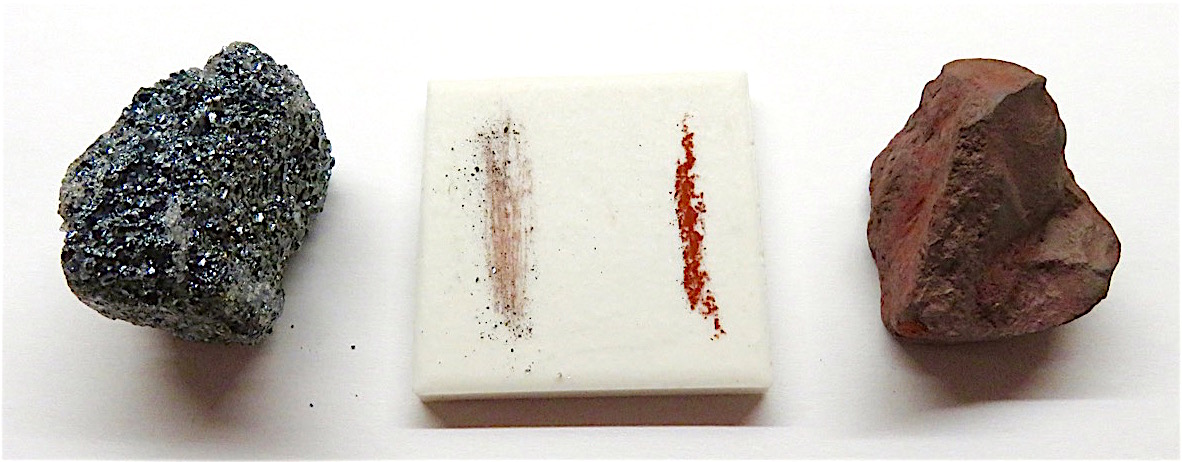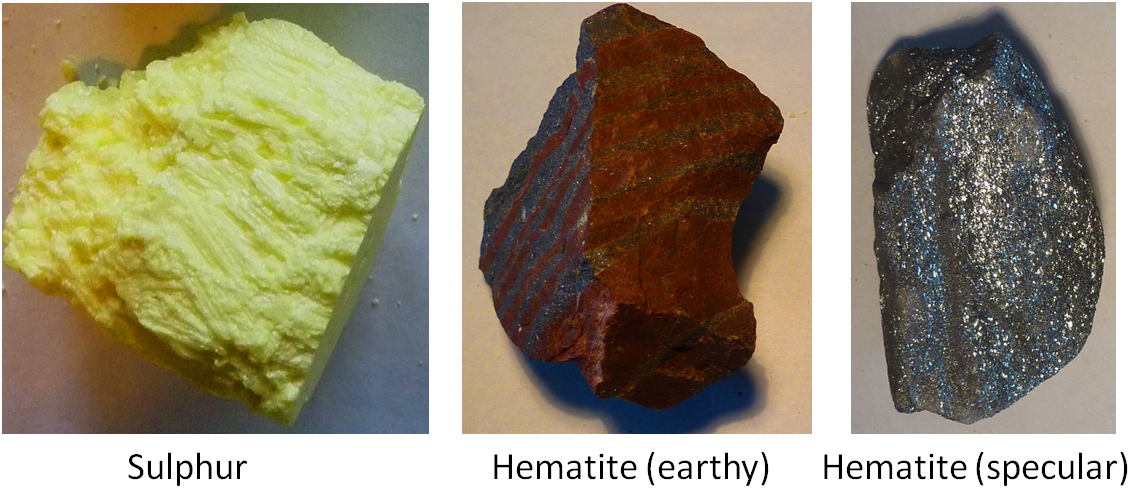Which of the Following Mineral Properties Can Be Directly Observed
Minerals can cleave into thin sheets mica or rods some types of asbestos or octahedrons fluorite or rhombic prisms calcite as well as other forms. Properties are determined from.

2 6 Mineral Properties Physical Geology 2nd Edition
The property of the minerals which can be observed directly just by looking at is are color streak luster transparency and crystal shape.

. Start with my table of the rock-forming minerals because these are the most common and the ones you should learn first. The majority are made up of silicate materials. Instead they fracture unevenly.
Color - Each minerals may differ in color depending on the type of minerals contained. A they can be a liquid solid or glass. Properties of Igneous Rocks.
Which of the following properties of stars is directly observed ie it can be measured by a calibrated instrument on a telescope from a single observation without a need for additional calculations. Many mineral exhibits have a fluorescence room equipped with black lights so this property can be observed. General mineral composition is used as part of the description of sandstones and conglomerates in the Ferm classification.
Which of the following properties of a mineral can be observed directly. Minerals also classified if they are metallic luster or non-metallic luster. There are many physical properties of minerals that are testable with varying degrees of ease including color crystal form or shape hardness luster or shine density and cleavage or fracture how the mineral breaks.
Color - Each minerals may differ in color depending on the type of minerals contained. The property of the minerals which can be observed directly just by looking at is are color streak luster transparency and crystal shape. Most minerals can be characterized and classified by their unique physical properties.
Hardness The ability to resist being scratchedor hardnessis one of the most useful properties for identifying minerals. Inside Our Earth Perimeter and Area Winds Storms and Cyclones Struggles for Equality The Triangle and Its Properties class 8 Mensuration Factorisation Linear Equations in One Variable Understanding Quadrilaterals The Making of the National Movement. The color of minerals have the tendency to change based on the chemical composition.
They can be fine-grained or close-grained. The general composition of sand-sized and larger grains can be directly observed. In addition many minerals have unique properties such as radioactivity fluorescence under black light or reaction to acid.
An even rarer optical property is phosphorescence. The physical properties of minerals include color hardness crystal form luster streak and cleavage. Earth Sciences questions and answers.
The elements of which they are made contain atoms of different atomic mass. Rock material properties are related to the physical properties of the rock-forming minerals and the type of mineral bonding. The most obvious property of.
C they have a specific internal crystalline structure. Also impurities can also influence the color of minerals. Color is the mineral property that is easily observed but can be unreliable when identifying minerals.
Also impurities can also influence the color of minerals. Hardness luster color streak specific gravity cleavage fracture and tenacity. Elements like Ti Cr V Mn Fe Co Ni and Cu can sometimes result in magnetism.
A mineral is a naturally occurring inorganic solid with a definite chemical composition. Some minerals like quartz display conchoidal fracture which looks sort of like the inside of an oyster smooth and curving. Examples of diamagnetic minerals are quartz plagioclase calcite and apatite.
Color is the mineral property that is easily observed but can be unreliable when identifying minerals. All of the possible answers are correct. The color of minerals have the tendency to change based on the chemical composition.
The process of igneous rock formation cannot be directly observed. D they have a specific predictable chemical composition. For the beginning student of geology there are a number of simple tests that can be used with a good degree of accuracy.
Different types of igneous rocks have different properties but there are some general properties that help identify all igneous rocks. Their mineral structures differ based on the different temperature and pressure conditions under which they. They all contain minerals.
Minerals that contain these elements may be weakly magnetic and can be separated from each other by their various degrees of magnetic susceptibility. The physical properties of minerals include color hardness crystal form luster streak and cleavage. Some of the tests can be performed easily in the field while others require laboratory equipment.
The Physical properties of minerals are used by Mineralogists to help determine the identity of a specimen. Certain minerals or trace elements within them give off visible light when exposed to ultraviolet radiation or black light. The property of mineral that can be observed directly are the color streak luster transparency and crystal shape.
Each minerals name is linked to a good photograph and notes to help you confirm the identification. The particles may be composed of common sedimentary minerals or other kinds of rock fragments. To this end the XRF-1800 sequential X-ray fluorescence spectrometer was used to analyze the chemical compositions of fillers as seen in Fig.
Once you have observed and noted these mineral properties you can take your information to a book or to an online resource. Some minerals dont cleave. One of the most interesting special mineral properties is fluorescence.
Properties Rock material properties are measurable or describ-able lithologic properties of rock material that can be evaluated in hand specimens or tested in the laborato-ry. Polymorphs minerals like diamond and graphite that have the same chemical composition but are nevertheless different minerals exist because. The chemical compositions of the mineral fillers determined the chemical properties of the fillers which played a critical role in the adhesion properties of the mastics.

Calcite Identification Crystals And Gemstones Calcite Calcite Crystal

Belum ada Komentar untuk "Which of the Following Mineral Properties Can Be Directly Observed"
Posting Komentar